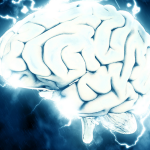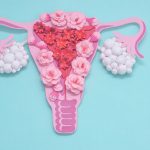Cold Feet and Water Treading
Sussanna Czeranko, ND, BBE
If the feet are neglected, the whole body suffer. -Father Sebastian Kneipp, 1901, 178
Nothing else can be more recommended to young and old than walking bare-footed in snow. -Father Sebastian Kneipp, 1904, 38
It may appear a simple matter to walk in water reaching to calves; this is, nevertheless, an excellent means of hardening the body.
-Benedict Lust, 1905, 20
Constant cold feet is common symptom that we tend to ignore because we dismiss and even rationalize its insignificance, most often in terms of their relevance to other presenting symptoms or conditions. Not so for the early Naturopaths who viewed chronic cold feet as a problem waiting to manifest. Their solution of using cold water or even snow to relieve cold feet may seem counter intuitive, misguided or even flawed. Kneipp comments, “Many thought it very strange and could not understand how it was possible to get the feet warm by cold water or snow.” (Kneipp, 1904, 38) Yet, cold feet became warm feet with various cold water applications. Philo vom Walde observes on the prevalence, “Chronic cold feet are nowadays a world wide suffering.” (vom Walde, 1904, 113) The early Naturopaths viewed cold feet as early warning signs of pathology. Strueh explains, “As to the treatment for cold feet it is important first to find out the cause of this condition and remove the same if possible. When the cause is removed the result will disappear also.” (Strueh, 1904, 36) One of the culprits for cold feet cited by Strueh is “the distribution of the blood has become disturbed either by an inflammatory congestion of an organ or by stagnation of the blood in one or the other part of the body.” (Strueh, 1904, 36)
Blood Circulation and Cold Feet
We easily agree that cold feet can be uncomfortable and even painful, particularly during the winter season. The obvious conclusion regarding cold feet is that there is a problem with blood circulation. “If the feet are cold, i.e. bloodless, the blood that should be in the feet, is imposed on another organ, which it excites.” (vom Walde, 1904, 113) The early naturopaths concluded that cold feet indicated blood congestion occurring somewhere in the body. In this regard, several conditions in other areas of the body were associated with cold feet, such as “vomiting, diarrhoea, throat trouble, a hot head,” (vom Walde, 1904, 113) as well as “headaches, … and lung catarrh.” (vom Walde, 1904, 114) Cold feet could also affect sleep and cause insomnia.
Kneipp noted that “thousands of people suffer[ed] constantly from headache and [that] … if you ask them, ‘How are your feet?’ the answer [was] invariably ‘Always cold.’ The headache arises, therefore from too much blood in the head.” (Kneipp, 1901, 177) Many who followed the advice of Kneipp, would “owe first the alleviation of their pain and finally the cure of their headache entirely to going bare-foot.” (Kneipp, 1901, 177)
Kneipp cites the case of man who had suffered “for more than 30 years from intense headaches during which time he had scarcely been free from pain for an hour. … He had made a trial of going bare-foot as recommended in My Water Cure, and after the first trial he found relief.” (Kneipp, 1901, 177) The man continued with the bare-foot walking and his headache disappeared completely.
Cold Feet and the Heart
Strueh noted that an early sign that a person had a weak heart was the lack of warmth in the extremities, especially the feet. He writes, “An enfeebled action of the heart will always first manifest itself in the remotest parts of the body, i. e., the feet.” (Strueh, 1904, 36) Strueh further explains, “In individuals who, for one reason or the other are afflicted with a weak heart, the condition of cold feet will follow even a moderate loss of heat, which would be immaterial in a healthy person.” (Strueh, 1904, 36)
Cold Feet at Night
“The pains caused by cold feet may become almost unbearable, sometimes lasting all night, and thus becoming the cause of insomnia.” (Strueh, 1904, 36)
Kneipp had many consult him regarding cold feet that prevented sleep. Kneipp describes the treatment, “In summer, I recommended to them to walk in water. In winter I advised them to walk in fresh fallen snow.” (Kneipp, 1904, 38)
Bare Foot Walking
Hardening the constitution was a popular therapy adopted from the practices developed by European water cure practitioners such as Vincent Priessnitz and Father Sebastian Kneipp. The treatment of cold feet, they taught, could always benefit from hardening. Kneipp adored snow as a tool in the hardening process. “By walking bare-footed in snow, drawing of the blood to the lower extremities is accomplished, which causes uniform and natural warmth.” (Kneipp, 1904, 38)
The early Naturopaths incorporated all facets of hardening within their water therapies. The chief purpose of hardening, they explained, was to make the body capable of resisting catching colds and improving the properties of blood in terms of quality and distribution. Kneipp used cold-water gushes or douches and also employed walking barefoot indoors, outdoors and also in water. Priessnitz, who preceded Kneipp, counseled many of his patrons to walk barefoot, in fact. As vom Walde reports, “During the life of Priessnitz, walking barefooted was the order of the day in Graefenberg; there was a special pasture for the dew walks.” (vom Walde, 1904, 113)
Barefoot walking was almost a religion for those who adhered to Kneipp’s teachings of water cure. Kneipp contended that “going barefoot hardens the body, tends to prevent sickness and ensures permanent health.” (Lust, 1905, 169) To engender health, one began from day one. Lust states in this regard, “Parents who wish to have healthy children should train them from the very day of their birth to a rational way of living, and to harden their bodies especially their feet.” (Lust, 1905, 169) “Those who go bare-foot,” he continues, “never suffer from cold feet which is the result of poorness of blood and too little of it.” (Kneipp, 1901, 177) Walking barefoot improved blood circulation and digestion. “Not only does going bare-foot strengthen and nourish the feet by drawing the blood down to them, and by causing a proper flow and circulation of the blood through the body, but it also strengthens the organs of the stomach.” (Kneipp, 1901, 177)
Bare-foot walking and water treading were for everyone, especially those who spent a lot of time indoors leading sedentary lives in front of a desk and today, parked at a desk adorned with a computer. Kneipp counseled, “The business man sitting all day long in his office with heavy aching head counts the minutes until his return home, exactly as the day laborer counts the strokes of the clock which announce his relief from work.” Kneipp observed that the office worker’s “head is heavy, for the close work has sent the blood so rapidly into it, making it burning hot, while his feet are like ice.” (Kneipp, 1901, 177-178) Lust reiterates, “It is a matter of long experience that people who pursue sedentary occupations often suffer from cold feet.” (Lust, 1905, p. 21) Clearly, then, for these early naturopaths the best remedy for cold feet and also for the brain worker whose “brain has too much to do and the body too little” (Kneipp, 1901, 178) was the simple activity of bare-foot walking. “The ‘going bare-foot’ acts like a plaster, drawing all the impurities to the feet and then getting rid of them.” (Kneipp, 1901, 178) Walking, however, was complemented by “treading”.
Today, as in Lust’s time, European medical spas often included water treading in the programs available for their patrons. The water treading was often combined with reflexology to stimulate the soles of the feet when patients went walking in the various temperatures of water. This was accomplished by adding a textured surface to walk on while in the water. In a Czech spa with which I’m familiar, for example, a long narrow pool with smooth pebbles has been available for many decades for its patients to walk in. The irregularity of the smooth pebbles, however, was not only to stimulate reflexology points on the feet, but also help to divert the mind from the cold water.
Walking in Water
Lust pointed out that “it may appear a simple matter to walk in water reaching to the calves” (Lust, 1900, 152); however, he cautioned his colleagues and his patients never to underestimate the shock of immersing one’s feet into cold tap water. Lust recommended, “The patient should stand in cold water reaching up to or over the knees, not longer than a minute.” (Lust, 1900, 152) When water treading, the feet should be in constant motion, best achieved by walking on the spot. Kneipp advised, “The wading should be in the coldest water and not for longer than from two to four minutes.” (Kneipp, 1901, 179)
For those just beginning with water treading, I highly recommend that a large tub is placed in the bathtub or shower and filled with cold tap water ankle deep. In most urban homes or offices, the temperature of water from the cold facet doesn’t seem very cold. In fact, while running one’s hand under the tap, one may even say the water is almost lukewarm. However, the experience that one feels when water treading in this same lukewarm/cool water is intensely and indescribably cold. Decades ago Lust advised those especially sensitive to cold, “to commence with lukewarm water and gradually reduce the temperature till the water is quite cold.” (Lust, 1900, 152)
The first experience should be a mild dose of water ankle deep at a temperature that is not too shocking to the system. We can learn from Lust who advises, “Before walking barefoot, also before walking in water, or on grass, care must be taken that the feet are thoroughly warm. If they are cold, they must first be warmed by rubbing or by a short warm foot-bath.” (Lust, 1905, 19) The effectiveness of the water treading is the greatest “if the water reaches the knees” (Lust, 1901, 18) and the water is very cold. To enhance cold water, “in winter, snow may be mixed with the water.” (Lust, 1901, 18)
The reaction of cold water on the body is seen quite visibly on the surface of the skin. When cold water touches the skin, blanching can observed as blood retreats to the core or the interior of the body and away from the skin. The capillaries spasm allowing for the blood to move to interior. The spasm lasts about 60 to 90 seconds and the capillaries relax resulting in a change in the colour of the skin. Baumgarten describes this process, “Soon again we notice the skin turning red, the blood has returned.” (Baumgarten, 1903, 184)
The simplicity and effectiveness of these water treatments is part of the power and grounding of naturopathic medicine. Our medicine brings patients back to their own bodies and back to mother earth. As the smallest stream yearns for the sea, so too our bodies yearn for such grounding the core elements of our medicine, chief among which is water.
 Sussanna Czeranko, ND, BBE is a CCNM graduate and is a licensed ND in Ontario and Oregon. Practicing since 1994, she has developed an extensive armamentarium of nature-cure tools and techniques for her patients, with special interest in balneotherapy and breathing therapy. In addition to clinical practice, she is the curator of the Rare Books Collection at NCNM. Her current project is a 12-book series entitled In Their Own Words, the first volume of which, Origins of Naturopathic Medicine, is now available from NCNM Press. The series restores to the profession the best of the early Lust journal literature. Sussanna founded The Breathing Academy, providing a scientific model of breathing therapy called Buteyko for naturopathic practice. Her next large project is to complete the development of a medical spa in Manitou Beach, Saskatchewan.
Sussanna Czeranko, ND, BBE is a CCNM graduate and is a licensed ND in Ontario and Oregon. Practicing since 1994, she has developed an extensive armamentarium of nature-cure tools and techniques for her patients, with special interest in balneotherapy and breathing therapy. In addition to clinical practice, she is the curator of the Rare Books Collection at NCNM. Her current project is a 12-book series entitled In Their Own Words, the first volume of which, Origins of Naturopathic Medicine, is now available from NCNM Press. The series restores to the profession the best of the early Lust journal literature. Sussanna founded The Breathing Academy, providing a scientific model of breathing therapy called Buteyko for naturopathic practice. Her next large project is to complete the development of a medical spa in Manitou Beach, Saskatchewan.
References
Baumgarten, A. (1903). On the different effects of cold water. The Naturopath and Herald of Health, IV(7), 184-185.
Kneipp, S. (1901). Going bare-foot. The Kneipp Water Cure Monthly, II(7), 177-180.
Kneipp, S. (1904). Snow. The Naturopath and Herald of Health, V(2), 37-39.
Lust, B. (1900). Hardening. The Kneipp Water Cure Monthly, I(9), 152-153.
Lust, B. (1901). Means of hardening. The Kneipp Water Cure Monthly, II(1), 16-19.
Lust, B. (1905). Hardening. The Naturopath and Herald of Health, VI(1), 19-21.
Lust, B. (1905). Going barefoot. The Naturopath and Herald of Health, VI(1), 16-170.
Strueh, C. (1904). Cold feet. The Naturopath and Herald of Health, V(2), 36-37.
Vom Walde, P. (1904). About walking barefooted. The Naturopath and Herald of Health, V(5), 112-114.









